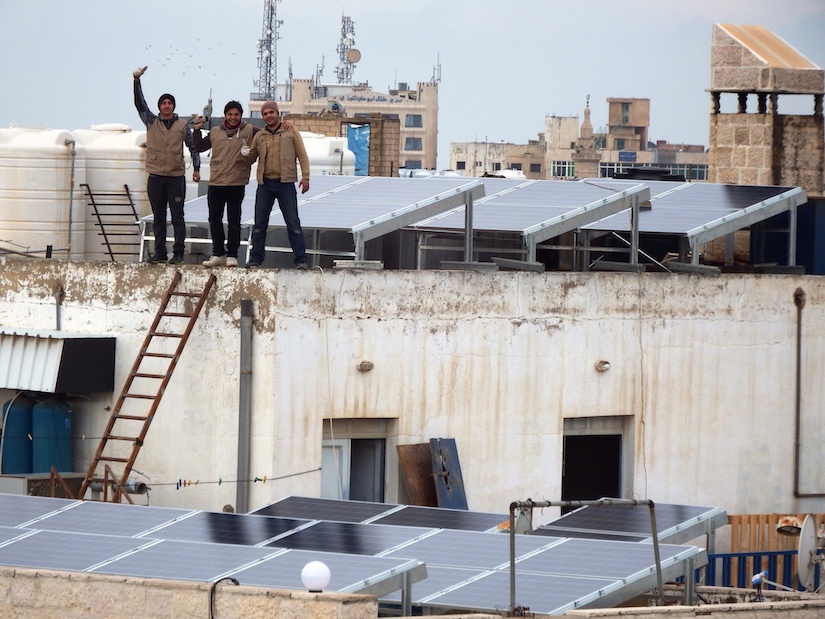Harnessing the power of Jordan's wind [Q&A]
![Harnessing the power of Jordan's wind [Q&A]](https://cdn.wamda.com/feature-images/02ec52dc6405bf9.JPG)
Solar panel units, satellite dishes and water tanks are no longer the only trademarks of residential rooftops. Two-meter high wind turbines can now be given some room as well, says Mahmoud Shattel.
As an electric engineering student, Shattel started working on drones. Due to financial and legal restraints, he found it difficult to commercialize them and decided that he’d rather use his aerodynamics knowledge to delve into alternative energy solutions. Rather than flying drones in the sky, Shattel opted for harnessing wind power instead. He soon landed on the idea of vertical windmills for residential and commercial use.
In 2013, Shattel launched Taqetna to offer wind energy solutions and registered the Reyah blade as a patent. The vertical blade generates electricity in low wind speeds starting at 3.5 meters/second (m/s), which makes it more efficient than the commercial turbine which starts at 5 m/s, according to Shattel.

Power generation at low wind speed is important for residential implementation, because wind speed in cities is usually lower than in wind farms that are constructed in open fields or deserts.
Although Taqetna was initially launched to specialize in wind energy, it soon began catering to the rising demand for solar solutions. And in fact, solar has picked up much faster than wind. Out of the 210 projects the company implemented in Jordan and Saudi Arabia, only 10 are wind related.
Now the company offers training and consulting services. It also develops three main products: the Reyah vertical wind turbine, the photovoltaic (PV) solar system and the T-structure, which is a PV mounting system.

Wamda: Why did you choose to develop vertical rather than horizontal wind turbines?
Shattel: Both vertical and horizontal turbines can start generating energy at low wind speeds, but the vertical ones are more appealing to residential and commercial clients. They look nicer and are more suitable architecturally, especially that their shape is uniform regardless of wind direction unlike horizontal turbines.
On the other hand, horizontal turbines are much more feasible for larger applications, such as factories. With lower cost, they produce more energy. We are currently developing a horizontal model of our patent technology with a 500 KW capacity. We are planning to release it in two years.

Wamda: Can you compare the performance of PV solar systems with that of wind turbines?
Shattel: PV solar systems can only produce energy during daylight which means that consumers would either need to depend on the network if they are on grid, or get bigger batteries to store the surplus if they are off grid. Wind on the other hand is more uniform, it flows in two daily cycles - one at sunrise and another at sunset. Therefore the wind turbine’s functional hours exceeds the solar system’s by 30 percent, which leads the turbines to produce more energy during the same time frame.
For example a 1KW wind turbine produces 7-8 kWh while the same capacity of a PV system produces 4-5.5 kWh.
For small scale projects, wind costs around 20 percent more than the solar projects, but it's okay because the energy yield is higher by 30 percent. For projects above 100 KW, in general, the cost of wind and solar projects per KW become almost equivalent.
Wamda: Then why are solar panels more widespread than wind turbines?
Shattel: The relatively high noise of the turbines are sometimes annoying to the neighbors. Other than that, installing wind turbines needs more professional supervision than solar panels which is why providers would like to prioritize solar over wind.

commercial wind turbines.
Wamda: What are some challenges you face in Jordan?
Shattel: First, the licensing procedure has become much more complicated and bureaucratic after the issuance of the Renewable Energy Law in 2012.
Second, some of the systems we are importing are subjected to customs tax, although importing renewable energy products is ‘supposedly’ exempt from tax.
Third, the energy grid does not have the capacity to host exterior systems. The Ministry of Energy has to expand the infrastructure. (A year ago the capacity of the Jordanian grid stood at 3,200 MW and could only accept another 500 MW)
Wamda: What do you think is the future of renewable energy in Jordan?
Shattel: Although some countries in the region such as Morocco are more advanced, Jordan has a progressive role in the renewable energy sector. It developed the know-how that I think will soon be exported to markets elsewhere, since the Jordanian market is very small and will soon be saturated with big consumers installing renewable systems.


